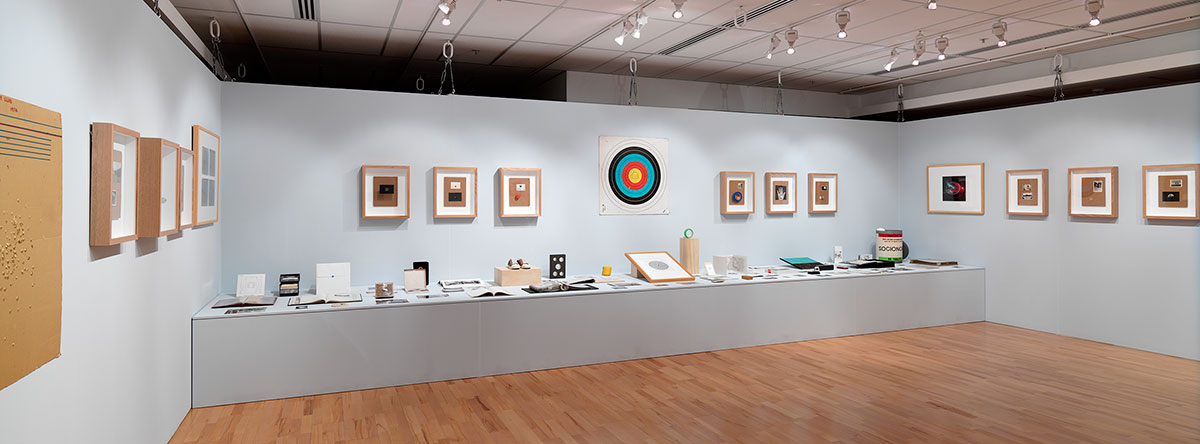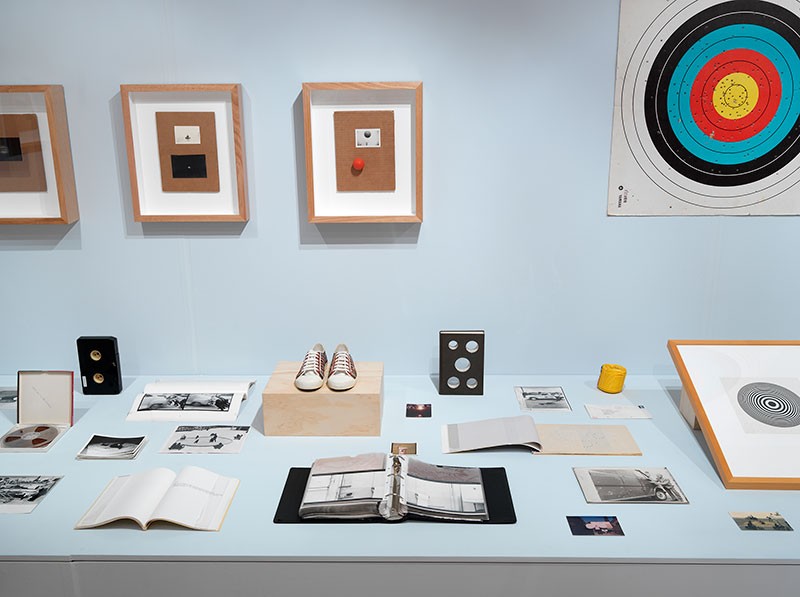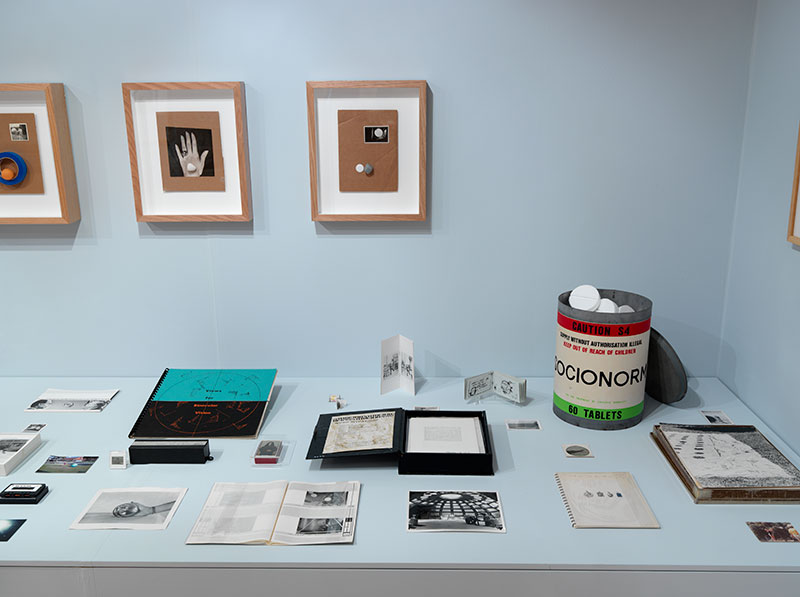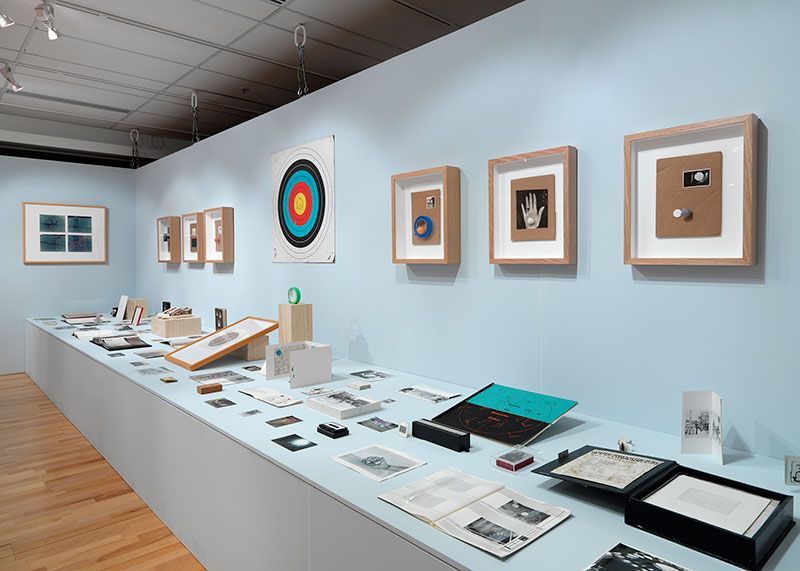
The Internet has done strange things to language. Twitter’s 120-character limit may demand a pithy directness – just compare Donald Trump’s discourse to the Gettysburg Address. But it is Internet search engines that have really helped us trim the grammatical fat. The quest for the most efficient set of search terms has turned us all into sophisticated data retrieval technicians, honing our disjointed, nonsensical word collages in an attempt to draw out the desired results. Yet, no matter how well we distil the search terms, the Internet still retains the capacity to bring back some truly odd, seemingly random results. This experience is not dissimilar to the effect of encountering one of Patrick Pound’s museological interventions. There is a perverse internal logic that draws together his assortments of disparate objects and ideas, you just need to be attuned to his witty and mischievous way of thinking in order to spot it.
Patrick Pound’s practice is distinctly post-Internet. This might not be the first thing that occurs to you when encountering the exhibition space, reconstructed as a massive shelf to enable the presentation of Patrick Pound: Thinking Through Things at Flinders University City Gallery. The artist’s collection of vernacular, analogue photography and anomalous objects have been integrated with ephemera – of a largely 1970s vintage – drawn from the Flinders University Art Museum’s Post-object and Documentation collection. Set up by Professor Donald Brook during his tenure at Flinders in the 1970s, the collection draws together documentation of conceptual and post-object art, featuring work by notable individuals such as John Baldessari, Mike Parr, and Ian Milliss, and groups such as the Art Workers’ Collective and Media Action Group.
Shorn of their context and jumbled together in Pound’s installation, the formal qualities of the museum’s “non-objects” take precedence over their conceptual content. The studied non-aesthetic style of 1970s conceptual art – all manila folders and typewritten manuscripts – resonates with Pound’s photomontages, in which the analogue snaps are framed and mounted on brown cardboard backing sheets. The overall installation has a wonderful sense of tactility, heightening the objectness of these post-object objects.

Pound is a collector par excellence, and he wields the Google and eBay search bar with the studied proficiency with which others handle a paintbrush. The vast collections of photographic images from which his exhibitions are created have been gathered from around the world. Pound is lyrical on the subject of pattern recognition algorithms and the way in which foreign languages influence the geographic distribution of search results. But the significance of the Internet goes beyond the mere means of manufacture: Pound’s work speaks eloquently about the way in which knowledge is categorised, catalogued and made accessible, a vital point of consideration in our post-Internet century.
The Internet is what Pound would call a “collage machine”, an instrument for generating new juxtapositions between ideas and images. Contrast this with the fusty alphabetisation of the encyclopaedia or the familiar classification systems of the museum, where everything is rigidly demarcated according to era, author, style and so forth. Like an Internet search, Pound’s museological interventions depend upon their own highly idiosyncratic method of searching and sorting through the catalogue. When installed, the outcomes of these searches often display an eclectic, omnivorous quality – ricocheting through art historical periods, materials and styles in a way that disrupts the staid logic of standard museological presentation. Yet that is not to suggest that Pound’s installations lack any consideration of form or coherence – such is the artfulness of his arrangements that new conceptual and aesthetic harmonies are drawn from seemingly dissonant juxtapositions.
Pound refers to the method by which he sorts and arranges objects and images as a “constraint”. These constraints range from the subtle poetic connections to a kind of “Dad joke” humour – often they manage to capture both. The ideas by which things are grouped are typically highly abstract or invisible: images and objects that imply the presence of the wind, breath or air; or an assortment of images of people listening to music. In comparison to these more conceptual groupings, the constraint which governs Thinking Through Things emphasises formalist qualities: here he has gathered together images and objects that feature or allude to circles, spheres, and holes. But perhaps there is a kind of contrarian logic in an approach that foregrounds pattern and shape, when dealing with a collection that has traditionally sought to deny the formal qualities of its acquisitions.
It is in the “constraint” and the idiosyncratic order that it generates that the inventive, humorous soul of Pound’s practice resides. The constraint prompts formalist jokes and odd conversations between images and objects. In the artist’s photomontages, an old image of the transit of Venus might sit alongside a golf ball, linked only by their shared roundness. Similarly, Christine Goodwin’s Socionorm: For The Treatment Of Excessive Normality (1984) is included purely for the shape of the oversized Styrofoam tablets and the tin in which they are stored. And yet, these are loaded objects that Pound is toying with, freighted with their authors’ original intents, and whole panoplies of art historical allusions. In this way, Pound’s limitation is exceptionally porous, capable of letting in huge swathes of art history. It is impossible, for instance, to consider Goodwin’s Socionorm without being reminded of Piero Manzoni’s Merda d'artista (1961), or Damian Hirst’s series of pill paintings and medicine cabinets. Pound is conscious of these echoes of art historical and vernacular forms, accentuating their visibility through careful positioning and framing.

The cardboard packaging that backs Pound’s framed images is pleasingly echoed in a pair of large, square cardboard sheets which bookend the display. Consulting the appropriately meticulous, museological floorsheet reveals that these large squares are the work of Bob Ramsay (1950–), and are titled An Archery Piece (a conditions and distribution activity in collaboration with the Adelaide Archery Club Inc.), from 1974. They are the reverse sides of a pair of archery targets, the bullseye turned to face the wall. Studded with holes, they meet the entry requirement of Pound’s constraint, and like Goodwin’s Socionorm, they allusively conjure art historical associations, recalling Lucio Fontana’s series of I Buchi—Holes (1949–68). But it is even more enjoyable to consider the way in which the distribution of arrows describes the invisible circle on the other side of the sheet. Appropriately, it is the errant arrow, the missed shot, which describes the target’s outer perimeter.
Pound’s work is generous and sensitive to error. The humour of his absurd constraints emerges from the way in which they seem like bungled, wrong-headed categories of classification. Pound confesses that in every exhibition, he feels compelled to include a piece that breaks the limiting criteria of the collection—a wrong move. Here, it is most likely and most appropriately the work of infamous iconoclast Tim Burns that breaks the mould: his Installation of Underground Reticulation Scheme, Humanities Building, Flinders University (1975) is a sequence of four photographs, depicting the digging of a trench. There’s just one problem: the hole is square. Interestingly, the marred photograph is another of Pound’s fascinations. He has built up collections of double exposures; images in which the photographer’s shadow has intruded; or in which the camera case is visible. Digital photography has erased these mistakes—the ability to instantly review, delete and amend spares the blushes of even the clumsiest shutterbug and has made such an error antiquated, a relic of our analogue past. Museum collections do something similar: in seeking to acquire the best possible example of a type of object, they subtly edit out the flawed or inept, striving, with the best possible intentions, to create an idealised view of history.
When an object is acquired into a museum collection, its meaning shifts and it is transformed into an historical, representative exemplar. Pound’s interventions challenge this perfectionist tendency. He asks the museum object to represent a different idea from the one it is intended to convey, something that it can only do loosely, clumsily, and occasionally poetically. But it is in this generosity of vision, this sympathy to error, that Pound’s installations offer a conception of history that seems richer and more complete. His interventions have the capacity, as the artist himself says, to “let the whole world in”.


